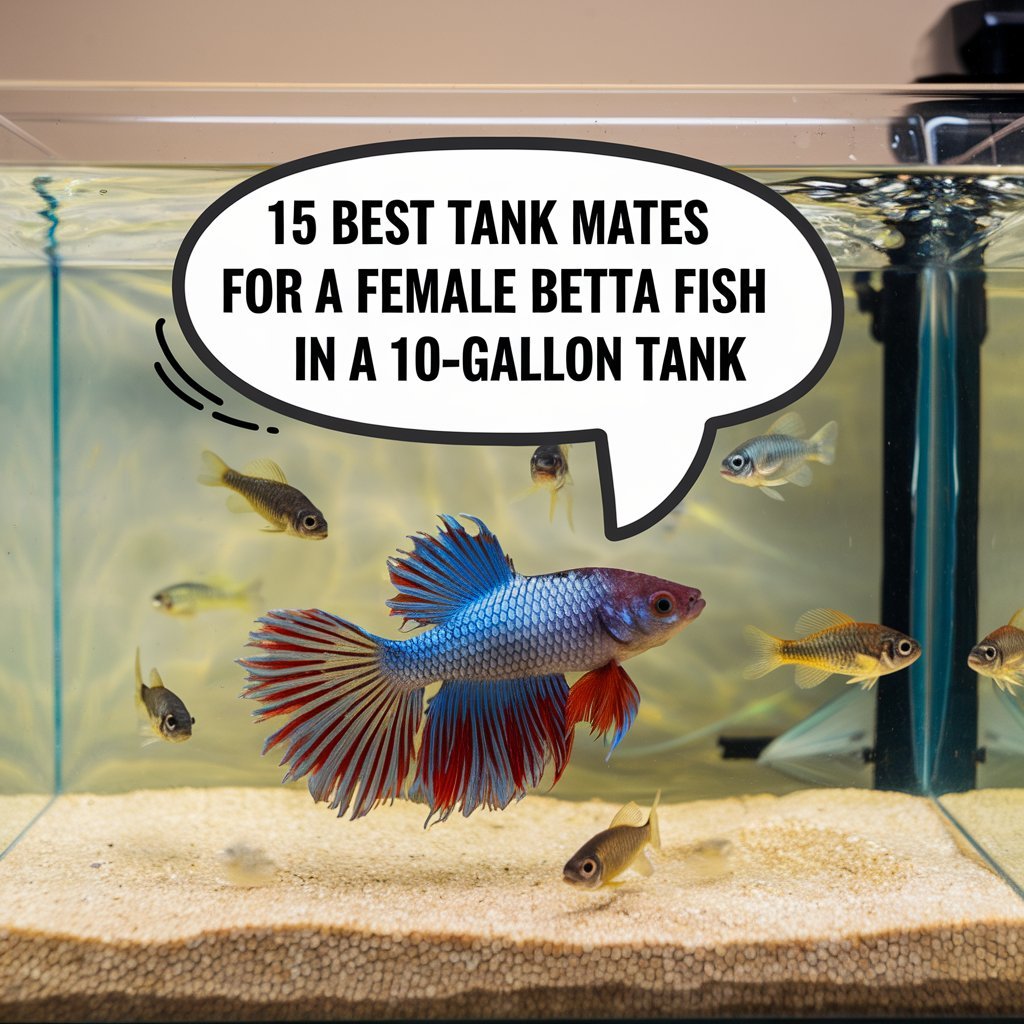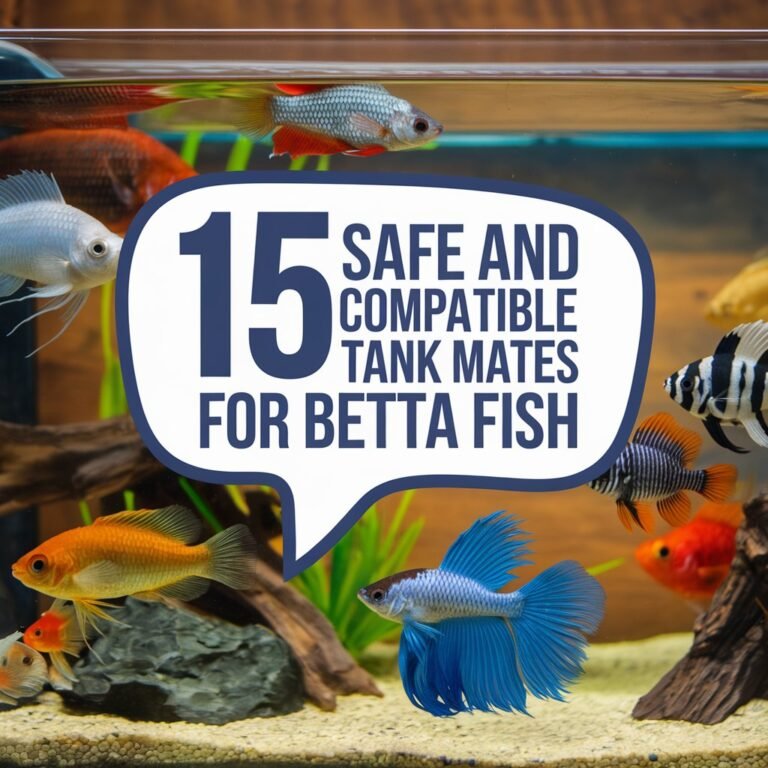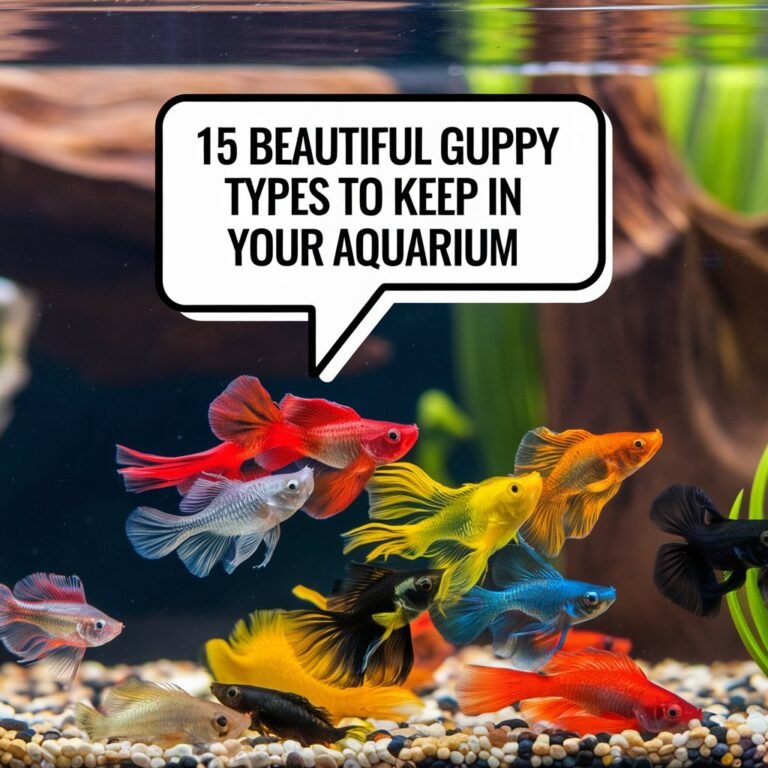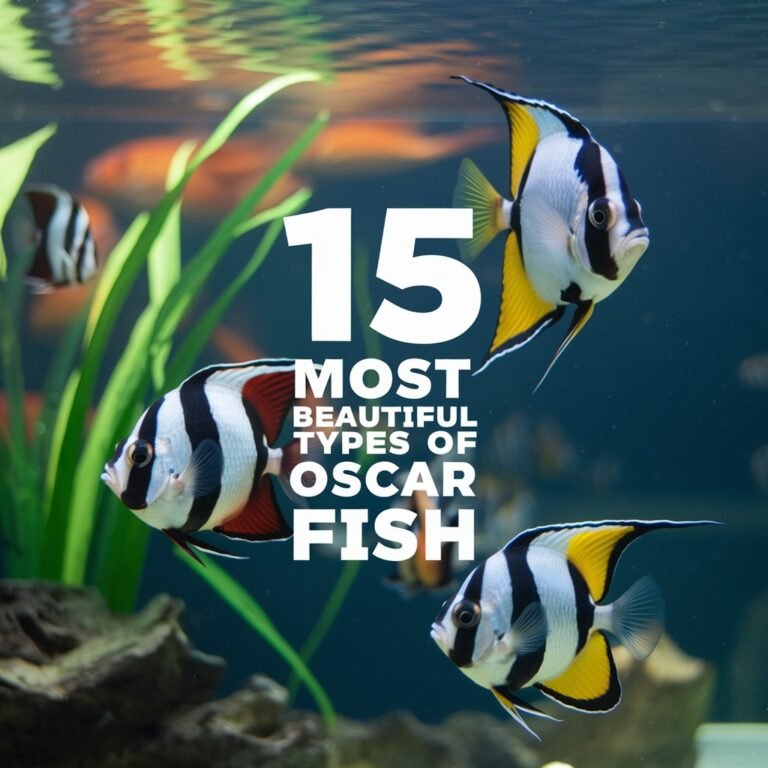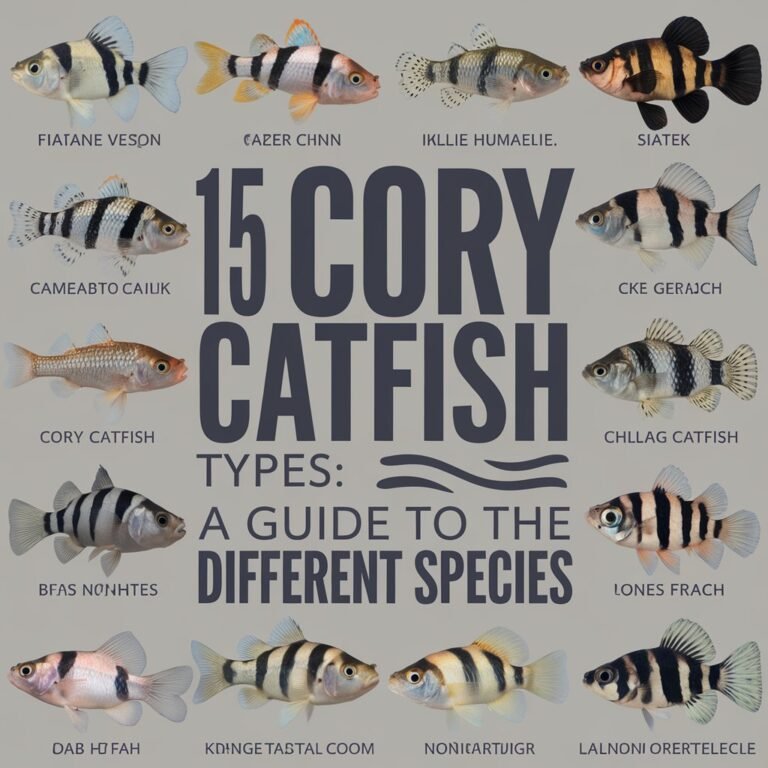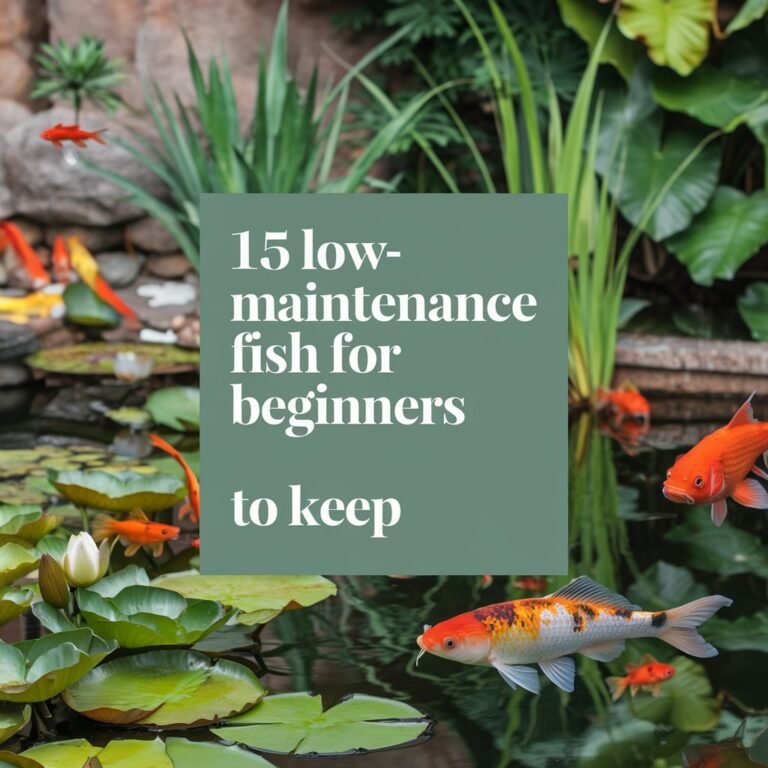15 Best Tank Mates for a Female Betta Fish in a 10-Gallon Tank
If you’re setting up a 10-gallon tank for a female betta fish, you’re probably wondering which tank mates will get along with her. You’re not limited to keeping her solo, as many peaceful fish species can thrive in her company.
In fact, a well-chosen community can add visual interest and create a more dynamic environment. But with so many options available, how do you choose the right ones? From schooling fish to gentle bottom dwellers, the possibilities are endless, but some species are more suitable than others. What are the top picks to ponder for a harmonious community?
In A Nutshell

- Female betta fish can be paired with peaceful schooling fish like Lemon Tetras, Harlequin Rasboras, or White Cloud Mountain Minnows.
- Gentle bottom dwellers like Corydoras Catfish or Pygmy Corydoras make excellent tank mates for female betta fish.
- Platies and Varieties, Honey Gouramis, and Dwarf Gouramis can also be suitable tank mates in a community setup with caution.
- Snails and shrimp like Amano Shrimp can be added to the tank for algae control and plant maintenance.
- When selecting tank mates, consider temperature, pH, and water chemistry compatibility with the female betta fish’s preferences.
Neon Tetras
When considering tank mates for a female betta fish, neon tetras can be a good choice, provided you’re willing to provide them with the right environment.
Neon tetras are schooling fish that thrive in groups, so verify that you keep them in a school of at least 10-15 individuals. This will help satisfy their schooling requirements and reduce stress.
In terms of neon tetra behavior, they’re active swimmers that prefer open swimming spaces.
You’ll need to provide them with plenty of room to move around, which can be achieved by adding plants or decorations that create pathways for them to swim through. Avoid overcrowding the tank, as this can lead to fin nipping and stress.
When pairing neon tetras with a female betta, confirm the tank is at least 10 gallons to provide ample space for both species.
Maintain soft, slightly acidic water with temperatures between 72-82°F (22-28°C).
With proper care and attention to their schooling requirements, neon tetras can make suitable tank mates for a female betta, adding a burst of color and energy to your aquarium.
Monitor their behavior and adjust your tank accordingly to guarantee harmony between the species.
Harlequin Rasboras
Maintaining a peaceful community aquarium with a female betta fish often involves selecting compatible species, and Harlequin Rasboras are a suitable option.
You can keep them in schools of six or more to create a harmonious environment, as this encourages natural Harlequin rasbora behavior, such as shoaling and exploring.
This active swimming species should be housed in a 10-gallon tank with plenty of open space to swim and exercise.
In terms of Harlequin rasbora care, they prefer water with temperatures between 72-82°F (22-28°C) and a pH of 6.0-8.0.
Providing a varied diet rich in nutrients will help promote healthy growth and development.
Include high-quality commercial flake foods and supplement with live or frozen foods to guarantee a balanced diet.
To maintain harmony between the Harlequin Rasboras and the female betta, you’ll need to monitor the aquarium closely for signs of stress or aggression.
Make sure the tank has plenty of hiding places, such as plants and decorations, to help the Rasboras feel secure and avoid confrontation with the betta.
With proper care and attention, Harlequin Rasboras can be an excellent addition to a peaceful community aquarium with a female betta.
Zebra Danios
Several Zebra Danios can make great tank mates for a female betta fish, as they’re an active, hardy species that can thrive in a variety of conditions.
They’re easy to care for and can tolerate minor water quality issues, but they still require regular maintenance to stay healthy.
When keeping Zebra Danios with a female betta, providing plenty of hiding places and plants is crucial to help reduce stress and aggression.
In terms of Zebra danio behavior, they’re a schooling species that prefer to be in groups of six or more.
They’re fast swimmers and can be quite active, but they’re not typically aggressive towards other fish.
However, they can be prone to fin nipping if they’re not kept in a large enough group.
When it comes to Zebra danio breeding, they’re relatively easy to breed in captivity, but they require specific water conditions and a separate breeding tank.
If you’re not interested in breeding them, keeping them in a single-sex group is vital to avoid unwanted breeding.
Cherry Barbs
If you’re looking for another active and peaceful species to pair with your female betta, Cherry Barbs are definitely worth considering.
They’re a relatively small species, growing up to 1-2 inches in length, making them a great fit for a 10-gallon tank. Cherry Barbs are schooling fish, so having them in a group of at least six to eight individuals is vital.
This will help to distribute their energy and prevent them from becoming aggressive towards your betta.
Cherry Barb Schooling is a natural behavior for this species, and they’ll often swim together in a mesmerizing display of movement and color.
Speaking of colors, Cherry Barbs come in a range of shades, including red, pink, and silver. Males have more vibrant Cherry Barb Colors, while females are generally more subdued.
When selecting Cherry Barbs as tank mates, choose a mix of males and females to create a visually appealing display.
With proper care and attention, Cherry Barbs can thrive in a community tank with your female betta, creating a dynamic and engaging aquarium environment.
They’re relatively easy to care for and can tolerate a range of water conditions.
Lemon Tetras
When considering Lemon Tetras as tank mates for your female betta, you’ll find they bring a burst of citrusy brightness to your aquarium.
These small, peaceful fish are easy to care for and can thrive in a 10-gallon tank with proper conditions. Lemon tetra behavior is characterized by their schooling nature, so it’s best to keep them in a group of at least six to ten individuals.
This will help distribute their energy and prevent them from becoming too active or aggressive.
In terms of Lemon tetra diet, they’re omnivores and feed on small insects, plankton, and algae in the wild.
In your aquarium, you can provide them with a balanced diet of high-quality commercial flake food, supplemented with live or frozen foods like brine shrimp or bloodworms. Avoid overfeeding, as this can lead to digestive issues and poor water quality.
With proper care and attention, Lemon Tetras can make great tank mates for your female betta, adding a lively and entertaining element to your aquarium. Their small size and peaceful nature make them a great choice for community aquariums.
Corydoras Catfish
You’re likely to find Corydoras Catfish an excellent choice as tank mates for your female betta, given their unique characteristics and gentle nature.
These small catfish are easy to care for and can thrive in a well-maintained 10-gallon tank. Cory cat personalities are generally calm and peaceful, making them a great match for a female betta.
They’re also good for cleaning up food debris from the substrate, helping to keep your tank clean.
Corydoras Catfish are schooling fish and should be kept in a group of at least six to eight individuals.
This Cory schooling behavior helps to reduce stress and promotes a sense of security among the group. When kept in a school, Corydoras Catfish are more active and entertaining to watch.
They’re also skilled at weaving through plants and decorations, making them a great choice for a planted tank.
With proper care and attention, Corydoras Catfish can be a wonderful addition to your community tank, providing a sense of belonging and harmony among your aquatic pets.
White Cloud Mountain Minnows
White Cloud Mountain Minnows, originating from China, are well-suited for community tanks housing female betta fish.
They’re an active, hardy species that thrive in cooler temperatures, making them an excellent choice for a 10-gallon tank with a temperature range of 64-75°F (18-24°C).
You’ll want to keep them in a school of at least six to eight individuals to showcase their natural schooling behavior.
They’re relatively small, reaching lengths of 1.5-2 inches (3.8-5.1 cm), so they won’t compete with your betta for space.
White Cloud Mountain Minnows are also mid-water swimmers, which means they’ll occupy a different stratum in the tank, reducing competition for resources.
When introducing them to your tank, make sure to provide plenty of hiding places and plants to help them feel secure.
They’re omnivores and will appreciate a varied diet that includes high-quality commercial flakes, pellets, and live or frozen foods.
With proper care and attention, White Cloud Mountain Minnows make an excellent addition to a community tank with a female betta, adding visual interest and activity to the aquarium.
Dwarf Gouramis
Considering the peaceful nature of female betta fish, Dwarf Gouramis can make suitable tank mates in a community setup, but with caution.
You should research and understand Dwarf gourami behavior before introducing them to your tank. They can be territorial and may fight with other fish, especially those with similar colors or fins.
In a 10-gallon tank, it’s best to keep only one male Dwarf Gourami to avoid aggression.
Dwarf Gouramis are also known to be prolific breeders, and their breeding behavior can be triggered by certain tank conditions.
You should be aware of Dwarf gourami breeding habits and take steps to prevent unwanted breeding. They can be sensitive to water quality and may require a separate breeding tank with specific water parameters.
When introducing Dwarf Gouramis to your tank, make sure to provide plenty of hiding places and visual barriers to reduce aggression.
You should also verify that your tank is well-planted and has a balanced water chemistry.
With proper care and attention, Dwarf Gouramis can thrive in a community tank with a female betta fish.
However, it’s crucial to monitor their behavior and adjust your tank conditions accordingly.
Pygmy Corydoras
While Dwarf Gouramis can make suitable tank mates for female betta fish, other peaceful and small species, such as the Pygmy Corydoras, are also worth considering.
You’ll want to keep in mind that Pygmy Corydoras are a schooling species, so it’s best to keep them in a group of at least six to ten individuals.
This will help them feel secure and exhibit their natural behavior.
When it comes to compatibility, Pygmy Corydoras are generally a good match for female betta fish.
They’re small, peaceful, and won’t compete for food or space.
However, you’ll want to guarantee that your tank is large enough to accommodate both species comfortably.
A 10-gallon tank is a good size, but you’ll want to avoid overstocking.
In terms of Corydoras compatibility issues, you’ll want to be aware that they can be sensitive to water conditions.
They prefer soft, slightly acidic water, so you’ll want to verify that your tank’s water parameters are suitable.
With proper care and attention, Pygmy Corydoras can make great tank mates for your female betta fish.
Amano Shrimp
Harmony in your aquarium can be achieved by introducing peaceful, low-maintenance species like the Amano shrimp. These small, gentle crustaceans are perfect for a 10-gallon tank with a female Betta fish.
Amano shrimp are native to Japan and are known for their ability to thrive in a variety of water conditions. They’re easy to care for and can be a great addition to your tank.
When it comes to Amano shrimp breeding, it is vital to provide a suitable environment. A well-planted tank with plenty of hiding places and a balanced diet can encourage breeding.
Amano shrimp are prolific breeders, and a single female can produce multiple batches of eggs. However, breeding Amano shrimp can be challenging, and it is pivotal to research and understand their specific needs.
In terms of shrimp tank decoration, Amano shrimp prefer a tank with plenty of plants, rocks, and driftwood. This provides them with plenty of hiding places and surfaces to graze on.
A well-decorated tank can also help to reduce stress and promote breeding. By providing a suitable environment, you can enjoy the benefits of having Amano shrimp as tank mates for your female Betta fish.
Snails and Shrimp
If you’re looking to expand your tank’s biodiversity, combining snails with shrimp like Amano shrimp can create a thriving ecosystem.
Snails are great for cleaning up algae and leftover food, while shrimp help with decaying plant matter. This combination can lead to a balanced environment that benefits your female betta fish.
When introducing snails to your tank, consider their breeding habits.
Some snail species, like mystery snails, can breed rapidly and may require separate housing to control their population. Research the specific needs of the snail species you’re interested in to guarantee you can provide the right environment.
Shrimp, on the other hand, are skilled at hiding and can be quite entertaining to watch.
They’ll often seek shelter in plants or decorations, so make sure to include plenty of hiding spots in your tank. Amano shrimp, in particular, are great at hiding and can be a fun addition to your tank.
Platies and Varieties
With their peaceful nature and small size, platies make ideal tank mates for female betta fish.
You can keep a small school of platies in a 10-gallon tank, as they’re active swimmers and enjoy the company of their own kind. When choosing platies, consider their varieties, such as the Mickey Mouse platy or the Blue platy. Each variety has its unique characteristics, but they all share similar platy behavior.
Platies are livebearers, which means they give birth to live young.
You’ll need to be aware of platy breeding habits, as they can breed quickly in a community tank. To minimize breeding, you can keep a ratio of one male to three or four females. This will help reduce aggression and stress among the platies.
When introducing platies to your tank, make sure to acclimate them slowly to prevent stress. Provide plenty of hiding places and plants for them to swim through, and maintain good water quality to keep your platies healthy and thriving.
Honey Gouramis
You’ve successfully integrated platies into your community tank, now it’s time to ponder another peaceful species that can coexist with your female betta fish: honey gouramis.
Native to South Asia, these fish thrive in temperatures between 72°F and 82°F, making them suitable for a 10-gallon tank with your betta.
Honey gourami behavior is generally docile, but they can be territorial. Introduce them in pairs or small groups to reduce aggression.
Honey gouramis are omnivores, and their diet should include a mix of plant and animal matter.
Feed them high-quality commercial flakes or pellets, supplemented with live or frozen foods like brine shrimp or bloodworms. They also appreciate vegetable-based foods like spirulina or algae wafers. Guarantee a varied diet to keep them healthy and thriving.
When housing honey gouramis with your female betta, provide plenty of hiding places and visual barriers to reduce stress.
A well-planted tank with open swimming areas will allow both species to coexist peacefully. With proper care and attention to their needs, honey gouramis can be a wonderful addition to your community tank, offering a unique and interesting dynamic to observe.
Celestial Pearl Danios
When it comes to peaceful, hardy species for your female betta tank, Celestial Pearl Danios are a top choice.
Native to the Pearl River basin in southern China and Southeast Asia, they’re adapted to well-oxygenated waters with a pH between 6.0-7.5. For their tank setup, aim to replicate this Pearl Danio Habitat by using open swimming areas and plants with varying water levels.
As a schooling fish, Celestial Pearl Danios are most active when in a group, exhibiting typical Danio Schooling Behavior.
In the wild, they school together to hunt for small insects, crustaceans, and plankton. For a harmonious 10-gallon tank, consider keeping at least six individuals of the same species.
This social setup not only showcases their schooling behavior but also spreads out any potential aggression. Make sure your tank provides enough swimming space, open areas for feeding, and ample hiding spots.
In return, your tank will display their dynamic, silver and turquoise bodies gliding in synchrony. A small school of Celestial Pearl Danios adds movement, activity, and excitement to your aquarium.
Ember Tetras
Ember Tetras thrive in well-planted, slightly acidic environments, making them a suitable match for a female betta tank.
You’ll want to maintain a pH range of 6.0-7.0 and keep the water temperature between 72-82°F (22-28°C) for peak health. Ember Tetras are a schooling fish, so crucially, keep them in a group of at least 6-10 individuals to satisfy their natural schooling behavior.
This will also help to distribute their attention and reduce aggression towards your betta.
When choosing Ember Tetras as tank mates, you’ll appreciate their striking Ember colors, which range from orange to red.
These tiny fish are relatively small, reaching a length of about 1-1.5 inches (2.5-3.8 cm), making them an excellent choice for a 10-gallon tank.
Ember Tetras are also active swimmers, so you’ll need to provide plenty of open swimming space and some hiding places, such as plants or decorations, to help them feel secure.
Frequently Asked Questions
Can I Keep a Male Betta With a Female Betta in a 10-Gallon Tank?
You’re considering pairing a male and female betta in a 10-gallon tank, but it’s vital to weigh the risks. Betta bonding is rare, and differing fin lengths can lead to fin compatibility issues and stress.
How Often Should I Change the Water in a 10-Gallon Tank?
You should change 10-15% of your tank’s water weekly, and 25-50% every 2-4 weeks to maintain ideal water quality and aquarium maintenance, ensuring a healthy environment for your aquatic life.
What Is the Ideal Water Temperature for a Community Tank?
You’ll want to maintain a temperature range of 76-82°F in your community tank, ensuring it complements water cycles and aquarium balance. Regularly check and adjust temperatures to keep your ecosystem thriving and harmonious.
Can I Add Cold-Water Fish to a Tropical Community Tank?
You can’t combine cold-water fish with Tropical hybrids, as they require different temperatures. Typically, cold-water fish thrive below 72°F, while Tropical hybrids need 76-82°F, causing stress if mixed in the same environment.
How Many Fish Can I Safely Keep in a 10-Gallon Tank?
You’ll want to ponder Fish Limits when stocking your 10-gallon tank. Generally, a safe rule of thumb is one inch of fish per gallon, but it’s better to understock to guarantee a healthy tank capacity.
FInal Verdict
When selecting tank mates for your female betta in a 10-gallon tank, consider the compatibility and needs of the chosen species. By choosing peaceful schooling fish or gentle bottom dwellers, you’ll create a harmonious environment.
Certify you research the specific requirements of each species, including tank conditions and dietary needs. With proper planning, a community tank with a female betta can thrive, offering a unique and engaging aquarium experience. Compatibility is key to a successful setup.
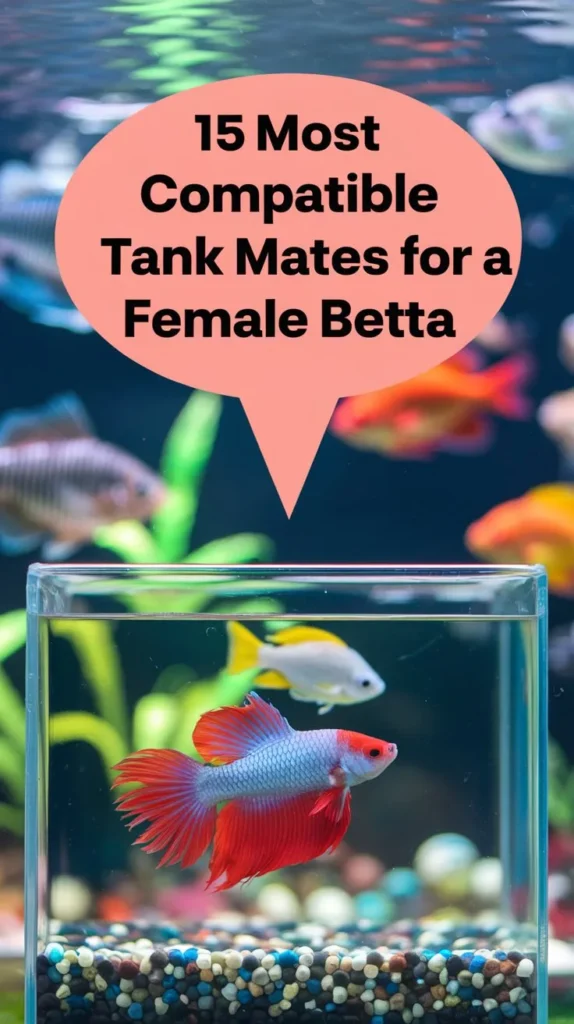
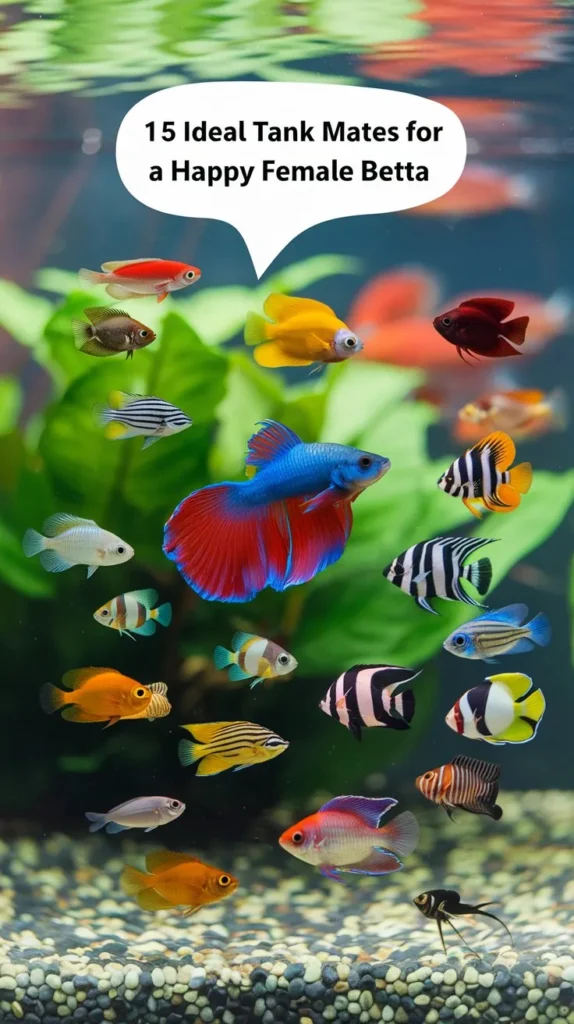
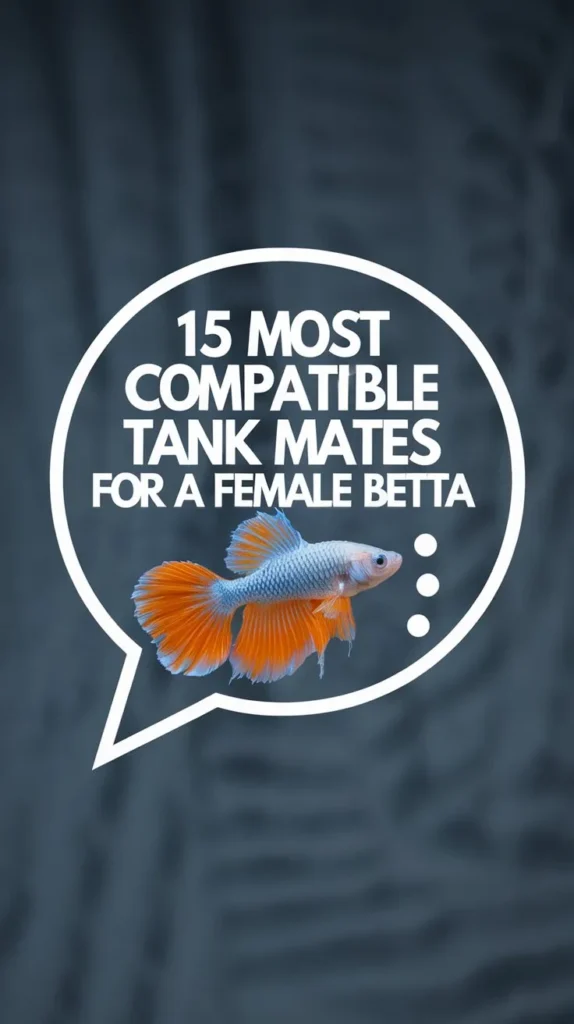

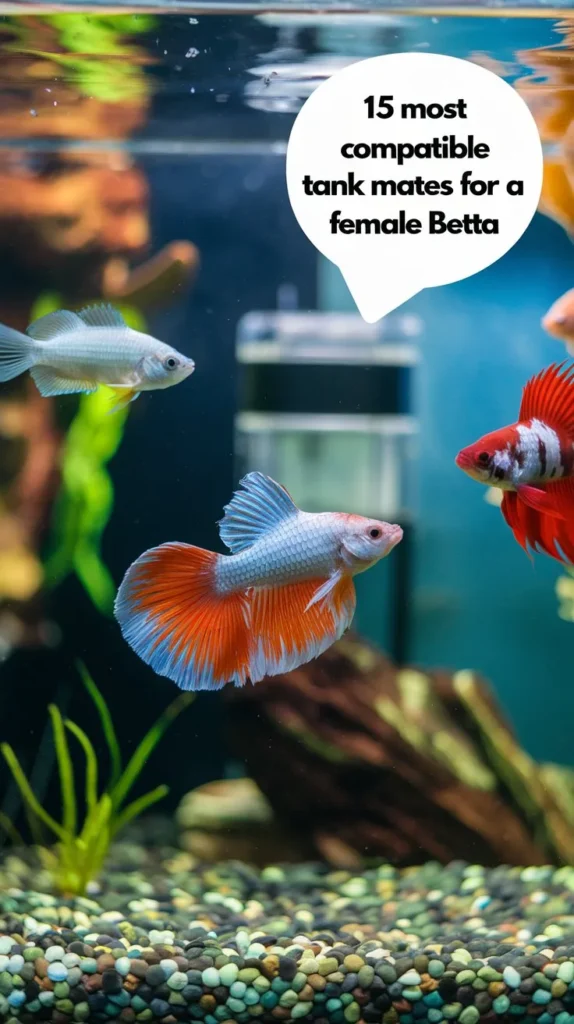
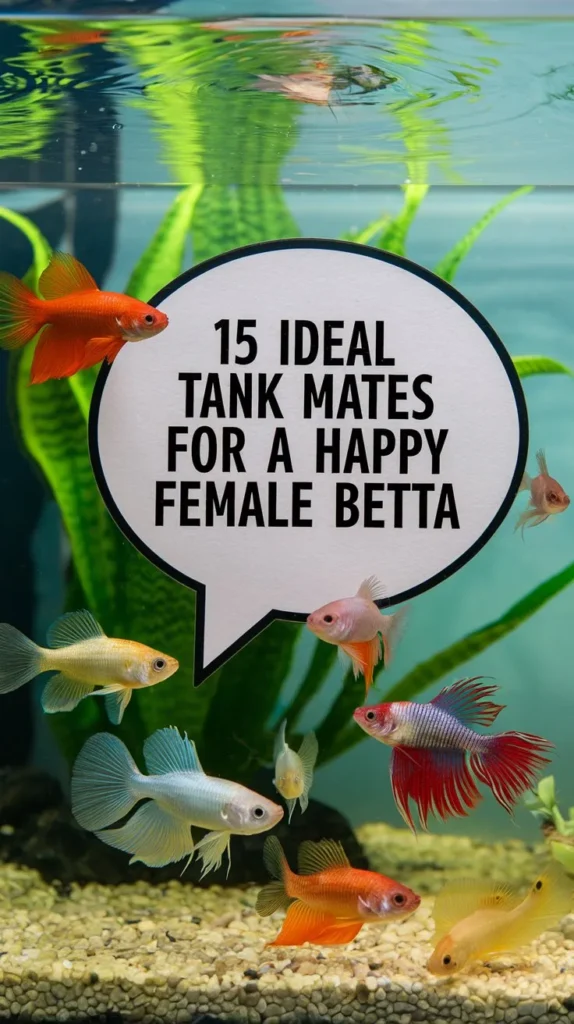
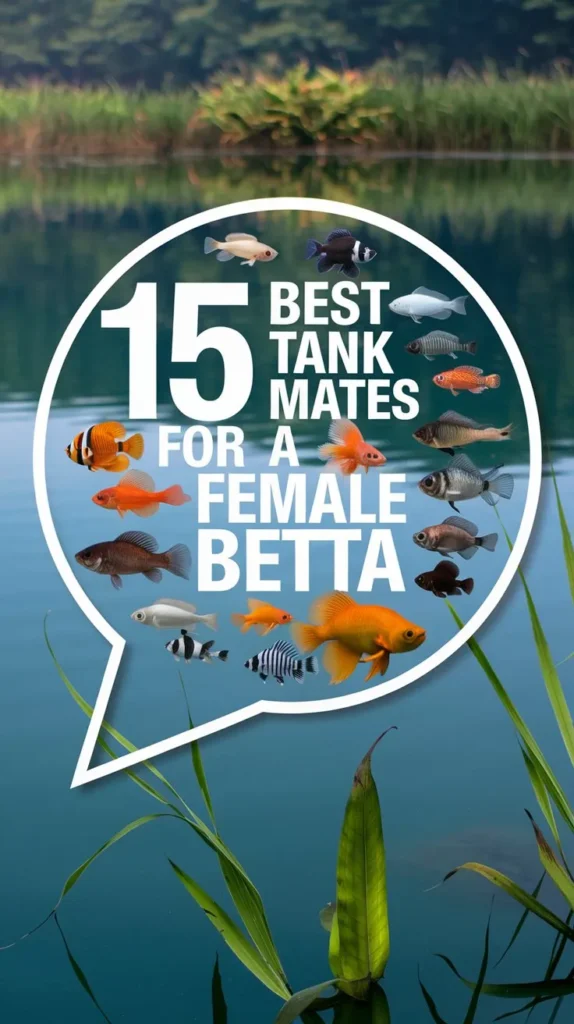
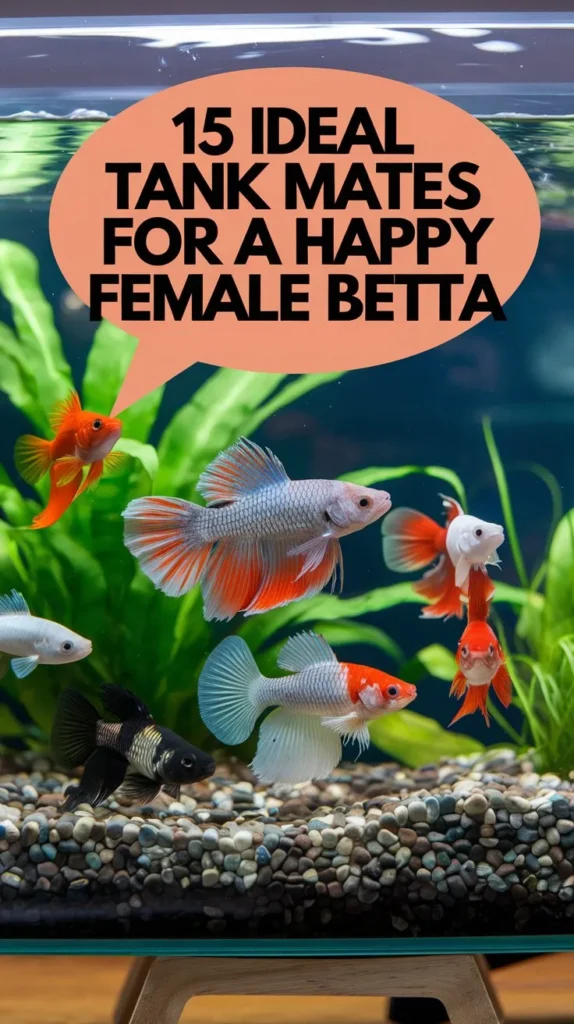
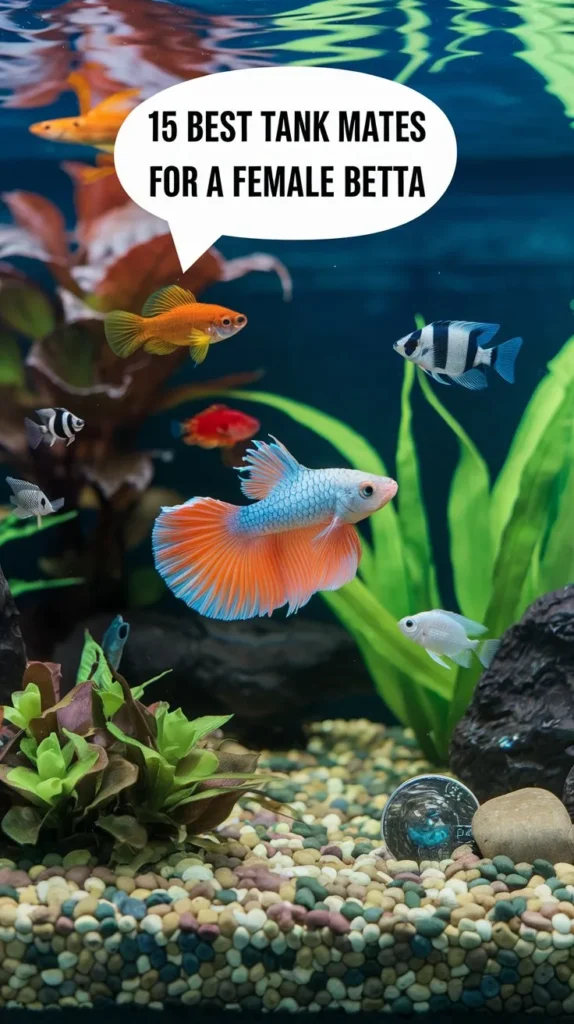


Hello, I’m Aria Cooper, the heart and soul behind Swimmy Buddies. As a devoted fish aficionado, I share my aquatic adventures and expertise to inspire your own underwater explorations. 🐠🌊

